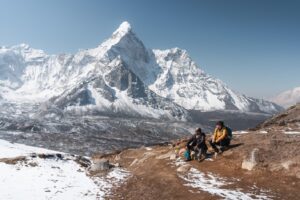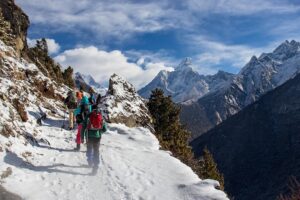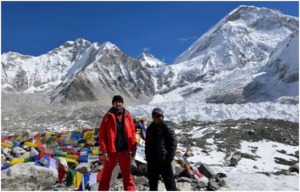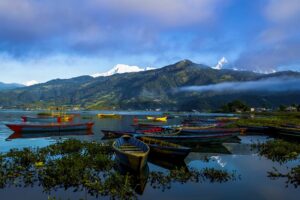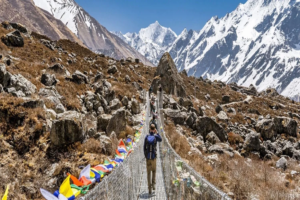High-Altitude Training Before Embarking The Everest Trek
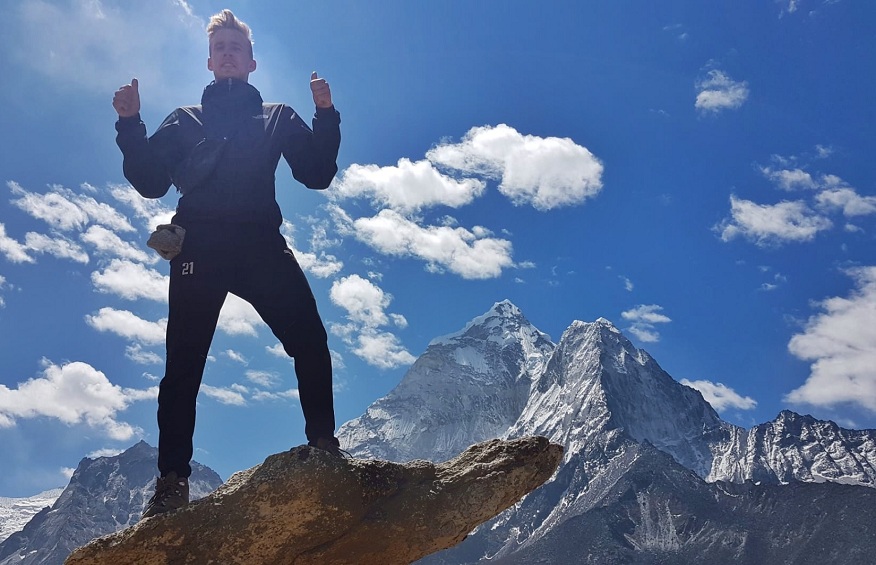
Everest Base Camp located at 5,364 m and highest altitude you will gain is 5,644 m (18,519 ft) which is Kala Patthar. Training for a high-altitude like Everest Base Camp trek is very important before you actually go on the trek. There are lots of elements to keep in mind before trekking. High-altitude treks are never easy. So, you should never go to any high-altitude trek unprepared. A big part of the preparation for a high-altitude trek includes training well for it.
There are a few things that you need to remember before you take yourself out on a trek. In this article, we have summed up everything you will possibly need to know before you ready yourself up for high-altitude training before a trek. Make sure to read till the end of this article to know more!
How to do high-altitude training before the trek?
You can prepare yourself for a high altitude trek by high altitude training before the trek as follows;
1. Yoga breathing rhythms
Yoga breathing rhythms are a great way to train for high-altitude treks. This helps you in learning how to breathe correctly even when there is no normal amount of oxygen supply in the air. Yoga breathing rhythms help a person synchronize his breaths with the air. If you, however, do not learn these breathing rhythms, you are more than likely to suffer in the long run. Yoga breathing rhythms are truly a magical remedy for anyone who is also training for high altitude training before the trek.
2. Drink an adequate amount of water
Drinking water or staying hydrated at all times throughout both your training and high-altitude trek is a crucial step to getting yourself the hydration and the training you need. When your body is hydrated, it is also more accepting of unnatural environmental conditions that it will face when at a certain altitude or point above a certain height. Hence, it is very important to drink as much water as you can.
3. Acclimatization should be a priority
Popular destination for Acclamatiztion during EBC trek are Namche Bazar and Dingboche. It should be kept in mind that acclimatization is very important. This is also a reason why even the most experienced mountaineers who have been to more than a height of 8000m tend to take several days off to get the proper amount of acclimatization. When you prioritize acclimatization, you are also prioritizing your need to habituate your body for worsening conditions that it is likely to face when on a high-altitude trek. High altitudes must never be faced without acclimatization as it help your bodily functions adjust to the growing altitude.
4. Increase the distance and altitude of training treks slowly and gradually
When you rush into increasing the distance of your altitude training trek all so suddenly, it becomes hard for you to adjust yourself to the conditions around you. Hence, it is important that you train both your body and mind to practice distance and altitude training very slowly. Rushing worsens things, while going slow makes things easier. Read more at: Everest Base Camp trek Difficulty.
5. Insurance
Another major aspect that should be well taken care of before signing in for a high-altitude trek is insurance. When you are at a maximum altitude trekking or on a helicopter tour, you never know what you are going to bring yourself close to. Having a travel insurance will help you be assured of having any risky incident taken care of.
6. Local remedies
Climbing a high-altitude mountain or going anywhere high altitude is likely to make you suffer. Hence, you can opt for some local remedies like chewing on churpi, or cocoa leaves to keep you off from any risk of altitude sickness. Likewise, hot drinks are just as amazing to keep you off from the risks of suffering at a high altitude.

